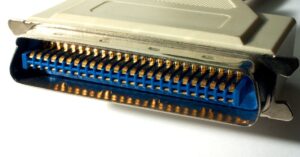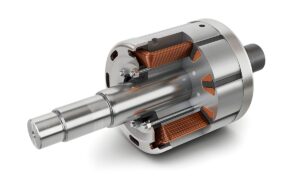As the cooler fall air approaches and the days get shorter, it’s time to start thinking about preparing your home for the upcoming seasonal changes. Fall is the time to ensure that your electrical system is in top shape, ready to handle the cold weather and increased energy demands. Proper electrical system maintenance can help you avoid unexpected problems and keep your home safe and efficient. Today, Right Electrical Services will explore all the necessary steps you need to take to prepare your electrical system for fall. Let’s get started!
1. Check and test your electrical system.
Before the fall weather sets in, it’s essential to do a thorough inspection of your electrical system. Start by inspecting your electrical panel for any signs of damage or corrosion. Additionally, make sure all circuit breakers are working properly and that there are no tripped breakers or signs of overheating. Look for any exposed wires, signs of corrosion, or any other damage that might indicate a problem.
Tip: Consider having a licensed electrician do a thorough inspection. They can spot potential problems that might not be immediately apparent to the untrained eye and ensure that your system meets current safety standards.
2. Check your heating system.
As cold weather approaches, your heating system will be working harder. Take the time to ensure that your heating system is in good condition by checking the electrical connections and ensuring they are secure. If you use an electric heater, inspect it for any signs of damage and make sure it is clean and free of dust. Regular maintenance of your heating system will help prevent breakdowns and ensure efficient operation throughout the fall and winter.
Tip: Replace the air filter in your heating system if it has been a long time since it was last changed. A clean filter can improve airflow and efficiency.
3. Preparing for fall storms
Fall is known for its unpredictable weather, including storms that can cause unexpected power outages. To prepare for potential power outages, consider installing a backup power system, such as a whole-house generator. Make sure the generator is properly wired and that you have a plan to use it safely in the event of a power outage.
Tip: Install surge protectors to protect your electronics and appliances from electrical surges that may occur during storms.
4. Check and upgrade exterior lighting
As daylight hours decrease, outdoor lighting becomes even more important for safety and visibility. Inspect all outdoor lighting fixtures to ensure they are working properly. Replace any burned out bulbs and clean fixtures to increase their effectiveness.
If you’re considering an upgrade, consider installing energy-efficient LED lights or lights with motion sensors. Not only do these options enhance security, they can also help reduce energy consumption and lower your utility bills.
Tip: Make sure outdoor electrical outlets are equipped with ground fault circuit interrupter (GFCI) protection to prevent electrical shock, especially in wet conditions.
5. Test smoke and carbon monoxide detectors.
As the weather cools, heating systems are used more, which can increase the risk of fires and carbon monoxide poisoning. Test all smoke and carbon monoxide detectors in your home to make sure they are working properly. Replace batteries if necessary, and consider upgrading to interconnected detectors for added safety.
Tip: Replace smoke detectors every 10 years and carbon monoxide detectors every 5 years to ensure optimal performance.
6. Review your home’s electrical loads.
Fall and winter can bring increased energy demands as heating systems, holiday lights, and other appliances turn on. Review your home’s electrical load to make sure your system can handle the extra demand. Avoid overloading circuits by spreading electrical usage across multiple circuits and unplugging appliances that aren’t in use.
Tip: Consider installing a smart thermostat to help manage energy consumption and maintain consistent temperatures while reducing energy costs.
7. Cleaning and maintaining electrical outlets
Dust and debris can build up around electrical outlets, which can be a fire hazard. Clean around outlets and make sure all covers are securely attached. Avoid using outlets that show signs of damage, such as discoloration or sparks, and have them repaired or replaced by a professional.
Tip: Use child-resistant plug covers or socket covers on unused outlets to avoid accidents and keep young children safe.
Let Right Electrical Services help you prepare for fall with electrical system maintenance!
Preparing your electrical system for fall is essential to maintaining the safety, efficiency, and comfort of your home. By following these basic maintenance tips, you can ensure that your electrical system is ready for cold weather and potential seasonal challenges.
Regular electrical inspections, proper maintenance, and timely upgrades can help prevent problems and keep your home running smoothly throughout the fall and beyond.
For professional help with your electrical system, contact our team of experts today. We’re here to help with inspections, repairs, and upgrades to keep your home safe and efficient this fall.
Renee Rose
Renee is a freelance copywriter and blogger known for her expertise on topics such as marketing, freelancing, mental health, and more. She has written for hundreds of small business websites and is the Director of Marketing here at Right Electrical Services, LLC. Renee believes that when a company prioritizes entertaining, engaging, and informative content for its readers, it can expect a loyal following that trusts its company.



